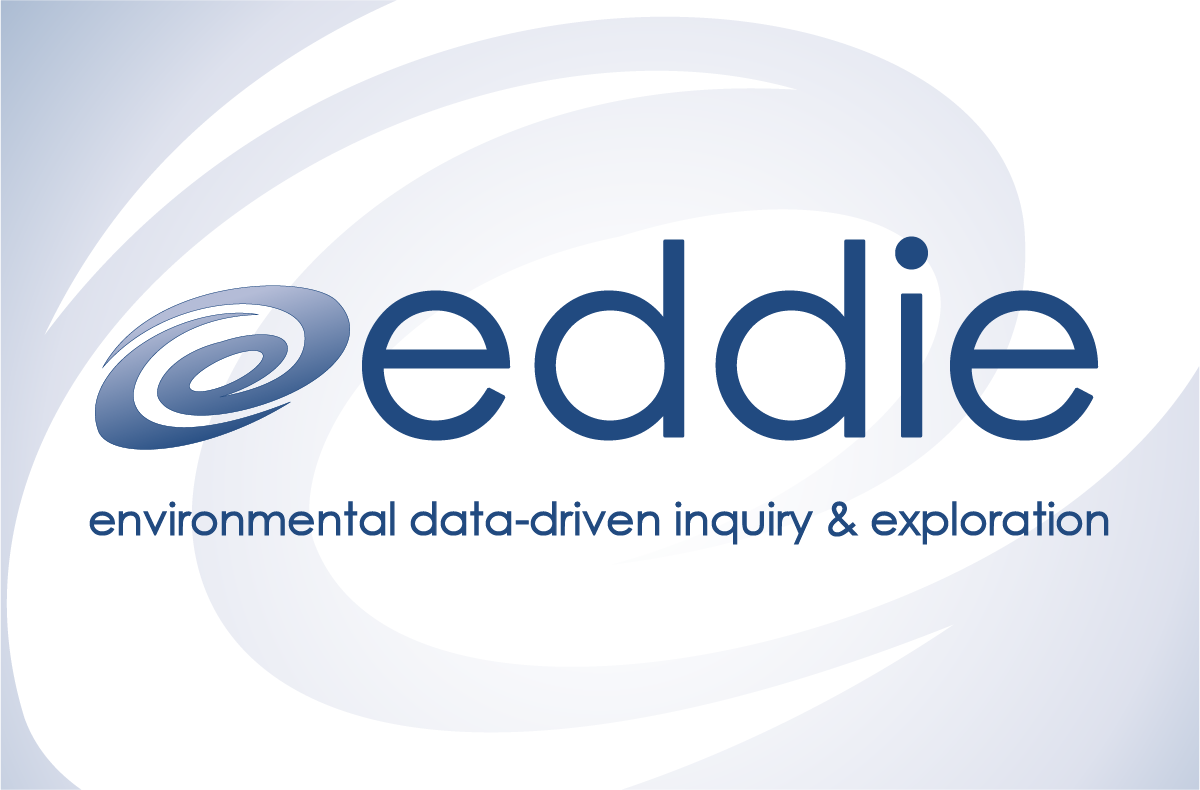Project EDDIE Fall 2022 FMN
Selected Modules
During the Fall 2022 semester, FMN participants will adapt and implement portions from one of the following sustainability or climate solutions modules into their classrooms. Please select the activities that will fit best into your course curriculum, we hope that the overlapping focus area will lead to rich discussions on teaching sustainability and climate problem solving using authentic data. All EDDIE modules are built with an A-B-C structure that makes them flexible and adaptable to a range of student levels and course structures. Below are overview descriptions of the available modules (modified or taken from the EDDIE website with EDDIE team permission).
Quick List of Modules (short descriptions follow below):
- Sustainability Metrics
- Green Infrastructure/Green Roofs
- Prairie EcoServices
- Paleoclimate & Biogeochemistry
- Phenology Trends & Climate Change in Minnesota
- Assessing the Risk of Invasive Species Using Community Science Data
Sustainability Metrics
This introductory level module allows students to interact with real-world data to identify, quantify, and visualize metrics of sustainability and how they can drive environmental impact. The breadth of available metrics is large, so exploring these datasets under an analytical IPAT (Environmental Impact is a function of Population, Affluence, and Technology) framework provides guidance and context for posing meaningful sustainability questions and answering them through the data analyses and quantitative reasoning. Students also answer questions about data availability, sources, suitability, and units.
Green Infrastructure/Green Roofs
In this introductory module students will explore green roofs as a potential solution to the environmental impacts of increased precipitation brought on by climate change. They will evaluate data collected from studies on 15 green roofs from different areas of the US and other countries, as well as historical precipitation data from Central Park in NY to illustrate how precipitation patterns are changing and if we need to use green infrastructure, such as green roofs, to combat the symptoms of climate change. Students will also use Model My Watershed , a watershed-modeling web app, to analyze real land use data, model storm-water runoff and water-quality impacts using professional-grade models, and compare how different conservation or development scenarios could modify runoff and water quality.
Prairie EcoServices
This module helps student formulate a 'community action plan that considers ecosystem services by: 1.) assessing the risk of future natural hazards and flooding events in the Houston area, 2.) quantifying the potential damage of future flooding incidents, 3.) evaluating current mitigation techniques and providing alternative, eco-friendly solutions, and 4.) identifying barriers to the implementation of their plan, as well as possible ways to overcome those barriers. Students can present their findings in a variety of formats, such as written or oral reports, poster presentations, Claim-Evidence-Reasoning (CER) gallery walks, etc.
Paleoclimate & Biogeochemistry
In this intro level module students explore the drivers of primary productivity on glacial-interglacial timescales. In Part A, students reflect on how nitrogen and phosphorous are distributed globally, and how patterns of primary productivity compare with those nutrient patterns. In Part B, students use statistical analysis to examine the influence of dust-borne iron on carbon export in two ocean regions. In Part C, students choose a data set to investigate the relationship between ocean carbon export and climate, formulate a hypothesis to test using that data set, and share their findings with peers.
Phenology Trends & Climate Change in Minnesota
Seasonal events, for example flowering, fruiting, and the return of migrating birds, happen at particular times of the year. Some of these events happen in relation to climate, while others are dependent on other factors. Phenology is the study of these repeating events in the lifecycle of organisms. As the climate changes, the timing of some events may change in some species. This introductory exercise helps students evaluate how climate change has already affected species in Minnesota using introductory spreadsheet skills and linear regressions.
Assessing the Risk of Invasive Species Using Community Science Data
This module introduces students who are already familiar with GIS to doing comparative analyses with large-scale community science (often called citizen science) data sets. Students explore how we can use community science data to examine the spread and distribution of invasive species in different geographic locations. In the final step, students identify different invasive species and determine if community science data accurately maps the threat these species pose.
